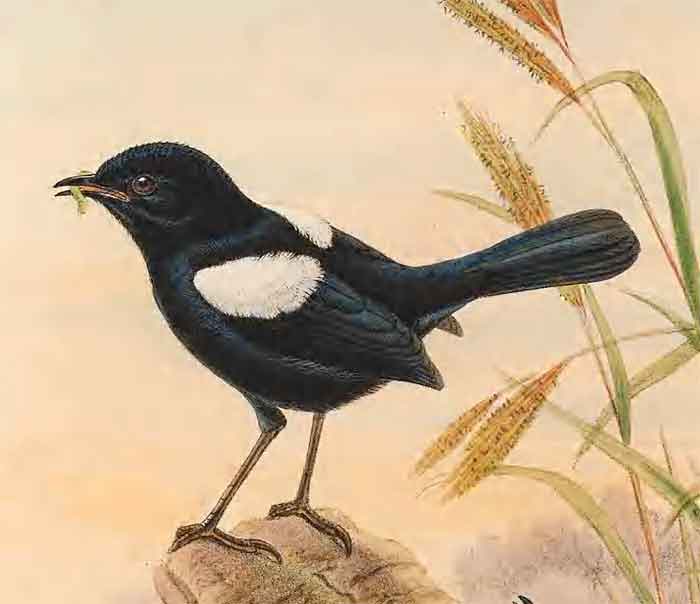
Superregnum: Eukaryota
Cladus: Unikonta
Cladus: Opisthokonta
Cladus: Holozoa
Regnum: Animalia
Subregnum: Eumetazoa
Cladus: Bilateria
Cladus: Nephrozoa
Superphylum: Deuterostomia
Phylum: Chordata
Subphylum: Vertebrata
Infraphylum: Gnathostomata
Megaclassis: Osteichthyes
Cladus: Sarcopterygii
Cladus: Rhipidistia
Cladus: Tetrapodomorpha
Cladus: Eotetrapodiformes
Cladus: Elpistostegalia
Superclassis: Tetrapoda
Cladus: Reptiliomorpha
Cladus: Amniota
Classis: Reptilia
Cladus: Eureptilia
Cladus: Romeriida
Subclassis: Diapsida
Cladus: Sauria
Infraclassis: Archosauromorpha
Cladus: Crurotarsi
Divisio: Archosauria
Cladus: Avemetatarsalia
Cladus: Ornithodira
Subtaxon: Dinosauromorpha
Cladus: Dinosauriformes
Cladus: Dracohors
Cladus: Dinosauria
Ordo: Saurischia
Cladus: Eusaurischia
Subordo: Theropoda
Cladus: Neotheropoda
Cladus: Averostra
Cladus: Tetanurae
Cladus: Avetheropoda
Cladus: Coelurosauria
Cladus: Tyrannoraptora
Cladus: Maniraptoromorpha
Cladus: Maniraptoriformes
Cladus: Maniraptora
Cladus: Pennaraptora
Cladus: Paraves
Cladus: Eumaniraptora
Cladus: Avialae
Infraclassis: Aves
Cladus: Avebrevicauda
Cladus: Pygostylia
Cladus: Ornithothoraces
Cladus: Ornithuromorpha
Cladus: Carinatae
Parvclassis: Neornithes
Cohors: Neognathae
Cladus: Neoaves
Cladus: Telluraves
Cladus: Australaves
Ordo: Passeriformes
Subordo: Passeri
Infraordo: Corvida
Superfamilia: Meliphagoidea
Familia: Maluridae
Genus: Malurus
Species: Malurus alboscapulatus
Subspecies: M. a. aida - M. a. alboscapulatus - M. a. balim - M. a. dogwa - M. a. kutubu - M. a. lorentzi - M. a. mafalu - M. a. moretoni - M. a. naimii - M. a. randi - M. a. tappenbecki
Name
Malurus alboscapulatus A.B. Meyer, 1874
Vernacular names
English: White-shouldered Fairywren
References
Sitzungsberichte der Kaiserliche Akademie der Wissenschaften in Wien 69 p. 496
The white-shouldered fairywren (Malurus alboscapulatus) is a species of bird in the Australasian wren family, Maluridae. It is found in New Guinea.
Taxonomy and systematics
The white-shouldered fairywren was first described by the German naturalist Adolf Bernhard Meyer in 1874. It is one of eleven species in the genus Malurus and is most closely related to a pair of Australian species, the red-backed and white-winged fairywrens, with which it makes up a phylogenetic clade.[2] These three species were termed the bicoloured wrens by ornithologist Richard Schodde, and are notable for their lack of head patterns and ear tufts, and their uniform black or blue plumage with contrasting shoulder or wing colour. They replace each other geographically across northern Australia and New Guinea.[3]
Its species name is derived from the Latin words albus "white" and scapulae "shoulder-blades".[4] Alternative names for the white-shouldered fairywren include the black-and-white fairywren, black-and-white wren, black-and-white wren-warbler and white-shouldered wren.
Subspecies
Six geographically isolated subspecies are currently recognized.[5] They are differentiated by the differences in female plumage as the males of all six are indistinguishable.[6]
M. a. alboscapulatus – Meyer, 1874: The nominate subspecies, it is found on Bird's Head Peninsula (north-western New Guinea)
M. a. aida – Hartert, 1930: Found in north-western and north-central New Guinea
M. a. lorentzi – van Oort, 1909: Originally described as a separate species. Found in western and southern New Guinea
M. a. kutubu – Schodde & Hitchcock, 1968: Found in the highlands of south-central New Guinea
M. a. moretoni – De Vis, 1892: Originally described as a separate species. Found in south-eastern New Guinea
M. a. naimii – d'Albertis, 1875: Originally described as a separate species. Found in eastern New Guinea
Description
The adult male is all shiny black except for their white shoulders (scapulars), but unlike the better-known Australian fairywrens there is no eclipse male plumage.[7] The tail is shorter than that of other fairywrens. The bill is black, and the feet and eyes are black or dark brown.[6] The females of M. a. alboscapulatus and M. a. naimii bear a pied plumage, with black upperparts contrasting with white shoulders and underparts.
Distribution and habitat
The preferred habitats of the white-shouldered fairywren are lowland cleared areas; grassland, village gardens, and cane-grass.[8]
References
BirdLife International (2016). "Malurus alboscapulatus". IUCN Red List of Threatened Species. 2016: e.T22703725A93934034. doi:10.2305/IUCN.UK.2016-3.RLTS.T22703725A93934034.en. Retrieved 15 November 2021.
Christidis, Leslie; Schodde, Richard (1997). "Relationships within the Australo-Papuan fairy-wrens (Aves: Malurinae): an evaluation of the utility of allozyme data". Australian Journal of Zoology. 45 (2): 113–129. doi:10.1071/ZO96068.
Schodde (1982), p. 31
Simpson, D.P. (1979). Cassell's Latin Dictionary (5th ed.). London: Cassell Ltd. pp. 33, 537. ISBN 0-304-52257-0.
Gill, Frank; Donsker, David, eds. (2017). "Lyrebirds, scrubbirds, bowerbirds & Australasian wrens". World Bird List Version 7.3. International Ornithologists' Union. Retrieved 2 Dec 2017.
Rowley & Russell, p. 185.
Rowley & Russell, p. 186.
Rowley & Russell, p. 187.
Cited texts
Rowley, Ian; Russell, Eleanor (1997). Bird Families of the World: Fairywrens and Grasswrens. Oxford: Oxford University Press. ISBN 0-19-854690-4.
Schodde, Richard (1982). The fairywrens: a monograph of the Maluridae. Melbourne: Lansdowne Editions. ISBN 0-7018-1051-3.
Retrieved from "http://en.wikipedia.org/"
All text is available under the terms of the GNU Free Documentation License

